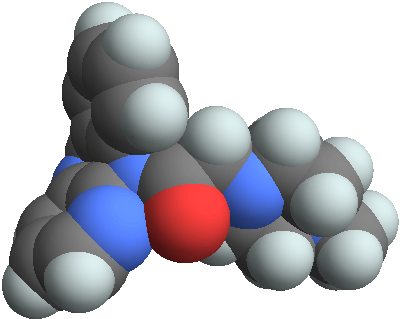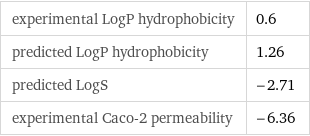Input interpretation

pirenzepine
Chemical names and formulas
![formula | C_19H_21N_5O_2 name | pirenzepine IUPAC name | 11-[2-(4-methylpiperazin-1-yl)acetyl]-5H-pyrido[2, 3-b][1, 4]benzodiazepin-6-one mass fractions | C (carbon) 64.9% | H (hydrogen) 6.02% | N (nitrogen) 19.9% | O (oxygen) 9.11%](../image_source/8903170fc781b77c734866d3f075e14b.png)
formula | C_19H_21N_5O_2 name | pirenzepine IUPAC name | 11-[2-(4-methylpiperazin-1-yl)acetyl]-5H-pyrido[2, 3-b][1, 4]benzodiazepin-6-one mass fractions | C (carbon) 64.9% | H (hydrogen) 6.02% | N (nitrogen) 19.9% | O (oxygen) 9.11%
Lewis structure

Draw the Lewis structure of pirenzepine. Start by drawing the overall structure of the molecule, ignoring potential double and triple bonds: Count the total valence electrons of the carbon (n_C, val = 4), hydrogen (n_H, val = 1), nitrogen (n_N, val = 5), and oxygen (n_O, val = 6) atoms: 19 n_C, val + 21 n_H, val + 5 n_N, val + 2 n_O, val = 134 Calculate the number of electrons needed to completely fill the valence shells for carbon (n_C, full = 8), hydrogen (n_H, full = 2), nitrogen (n_N, full = 8), and oxygen (n_O, full = 8): 19 n_C, full + 21 n_H, full + 5 n_N, full + 2 n_O, full = 250 Subtracting these two numbers shows that 250 - 134 = 116 bonding electrons are needed. Each bond has two electrons, so in addition to the 50 bonds already present in the diagram add 8 bonds. To minimize formal charge oxygen wants 2 bonds, nitrogen wants 3 bonds, and carbon wants 4 bonds. Identify the atoms that want additional bonds and the number of electrons remaining on each atom: Fill in the 8 bonds by pairing electrons between adjacent highlighted atoms. Note that the six atom rings are aromatic, so that the single and double bonds may be rearranged: Answer: | |
3D structure

3D structure
Basic properties

molar mass | 351.41 g/mol phase | solid (at STP)
Units

Hydrophobicity and permeability properties

experimental LogP hydrophobicity | 0.6 predicted LogP hydrophobicity | 1.26 predicted LogS | -2.71 experimental Caco-2 permeability | -6.36
Basic drug properties

approval status | approved | small molecule drug categories | anti-ulcer agent | antimuscarinic | antispasmodic | muscarinic antagonist

brand names | bisvanil | gasteril | gastrozepin | leblon | pirenzepin | pirenzepine gastrozepin | tabe | ulcosan
Chemical identifiers

CAS number | 28797-61-7 PubChem CID number | 4848 PubChem SID number | 9711 SMILES identifier | CN1CCN(CC1)CC(=O)N2C3=CC=CC=C3C(=O)NC4=C2N=CC=C4 InChI identifier | InChI=1/C19H21N5O2/c1-22-9-11-23(12-10-22)13-17(25)24-16-7-3-2-5-14(16)19(26)21-15-6-4-8-20-18(15)24/h2-8H, 9-13H2, 1H3, (H, 21, 26)/f/h21H InChI key | RMHMFHUVIITRHF-PKSOQXRJCW